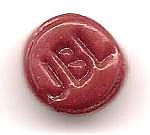Hello JBL savants,
I'm putting my 2426 and 2445 compression drivers on home-made wooden tractrix horns.
The throats of the drivers are tapered: on the 2445 it's visible, on the 2426 the mesh hides it.
I need to know these angles in order to calculate the tractrix horns. Can anyone pls help me?
TIA Thomas



 Reply With Quote
Reply With Quote













 , Germany (born in Sweden, with Danish citizenship, as it were), so shipping costs are prohibitive. However, if you could get the time to just measure the inside angle of the 2426 throat exit (or the diameters of the tube at both ends) this would be greatly appreciated.
, Germany (born in Sweden, with Danish citizenship, as it were), so shipping costs are prohibitive. However, if you could get the time to just measure the inside angle of the 2426 throat exit (or the diameters of the tube at both ends) this would be greatly appreciated.
